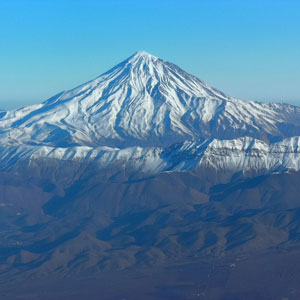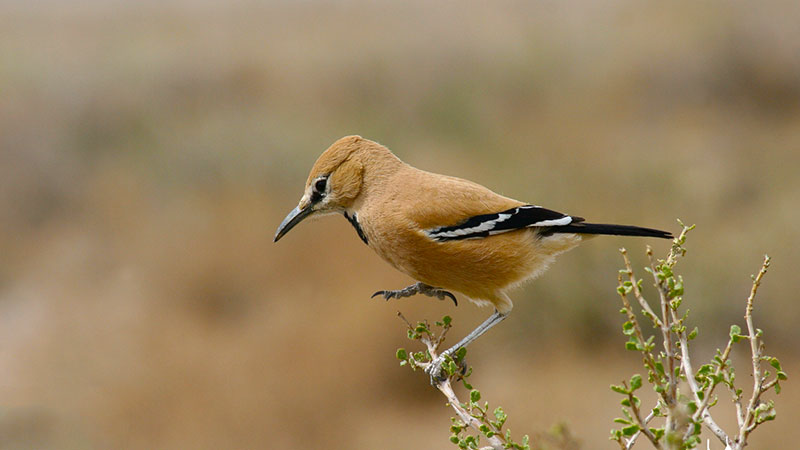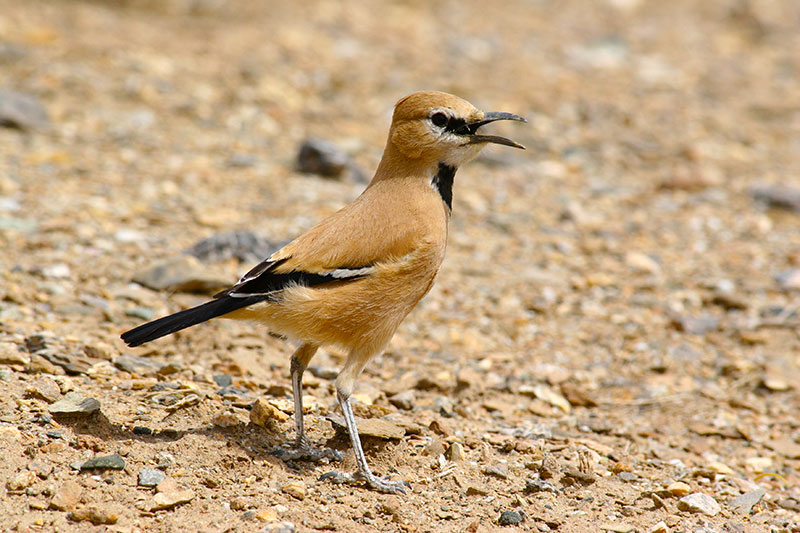 Signin with Google
Signin with Google Signin with Facebook
Signin with Facebook Nature
NatureIranian Ground Jay, the National Iranian Bird

The way she walks, like she knows about her rarity. She has blond colour and black eyes and is in the family Corvidae, but in the silence of the desert, her euphonious singing merges with the melody of the wind. Shepherds believe that seeing the little swift bird is to bring good luck.
Iranian Ground Jay with common name Pleske's Ground Jay is a species of bird that is endemic to Iran, in fact, the Persian Ground jay is the only endemic bird of Iran, and it's one of the reasons it is the "Iran National Bird" that the world's famous birdwatchers have recorded Pleske's in their large lifelist.
Distinguish it with a black spot over its chest
The shape and appearance of Pleske's ground jay (Podoces pleskei) are very similar to Hoopoes yet this indicator species lacks hoopoe's crest, and its khaki buff-brown colour makes it unique among all bird species in Iran. A pair of black lines along the peak finally attains the eyes, and the triangular black bib is the significant property of this 24-cm length bird.
Iranian ground jay prefers running on the ground in spite of the capability of flight which may be the result of its strong legs that can run on the ground faster than you can imagine whenever feels any danger or thread.
The native Iranian bird's food consists of insects, small arthropods and seeds. Plesk's stores the surplus food under the soil and special hideout; since it may forget the place of stored grains and never get the chance to use a lot of the food; Pleske's ground jay helps the propagation and germination of the seed as well.

A patriot bird species
This little bird is so territorial. Before breeding, they specify their territory. Other pairs must have a domain to live within a radius of 500 meters far. This lovely bird is monogamous, and there is not a distinct difference between male and Female Pleske's in terms of form and look.
But where is the habitat of Iranian ground jay?
The habitat of Iranian ground jay is mostly wherever that Zygophyllum grows in the semi-desert plains of Iran. They search for this plant to build the nest over the shrubs which grew up to 1.5 meters above the ground surface.
Pleske's ground jay brings the family
With the beginning of spring, Iranian ground jay starts building its nest on "Zygophyllum" or "Artemisia" steppes which occur in the eastern border of Iran and borders of central desserts of the Iranian plateau to be ready for reproduction.
They build the nest from thin branches and twigs that protect nestlings against direct radiation from the sun. They cover their nest with soft wool as a safeguard for the feather-less skin of the young birds. It's the start of their instinctive parenthood lives.
In the last month of winter, when the sun is shining stronger in the desert's sky, it is time for breeding which happens just once a year, and lying occurs. Usually, the mother lays 4 to 6 small eggs with brown spots. Young birds fledge after 12–17 days. And it's the most crucial and also difficult period for their parents. Pairs do parenting together, and they both look in the arid desert for food. Their long beak is their only tool for searching for food among sands of dessert or scrubs of the plain. A few times during the day they meet to deliver the food to the mother. She gathers all around and feeds her children.
The desert's stupid running bird
They are so timid during parenting, and when they feel danger, they start to walk fast. And their fast walking instead of flying is the reason why local people call them "Ahmagh-e Davan" means Stupid-runner in Persian.
The little chicks are born with closed eyes having no feathers. In each meal that the mother delivers to her chicks, she waits to carry their excrement off from the nest. To her chicks beds stay clean and also hunters can't find out their place by smell. It is a repetitive task that continues with the fusion of love and instinct.
After feathers grow on chicks' bodies, like their parents, in a few days they are ready to go in nature. They will leave their nest forever. And when their feet touch the sand of the desert, the treatment ends. Three weeks after breaking eggs, their nest is empty and they fly away through the azure desert's sky.



